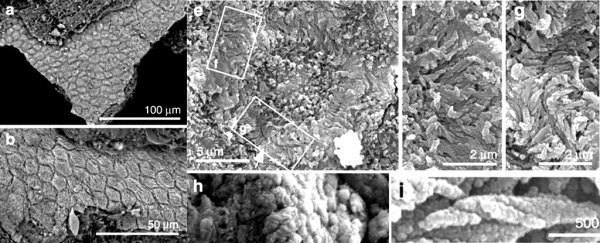When you think of animals with dandruff, dinosaurs probably aren't the first creature that would come to mind.
But palaeontologists have recently discovered the oldest dandruff ever found - on a dinosaur fossil. It's from a small feathered dino from a staggering 125 million years ago.
Although this might seem like a weird thing to look out for, it actually has huge implications for what we know about how feathered dinosaurs shed their skin.
"The fossil cells are preserved with incredible detail – right down to the level of nanoscale keratin fibrils," said one of the team, palaeobiologist Maria McNamara from University College Cork in Ireland.
"What's remarkable is that the fossil dandruff is almost identical to that in modern birds – even the spiral twisting of individual fibres is still visible,"
The team looked at three fossils - Microraptor, Beipiaosaurus and Sinornithosaurus, and found dandruff in all three of them.
The Microraptor was the oldest fossil at 125 million years – giving it the crown of world's oldest dandruff, at least for the moment.
"This is the only ever reported fossil dandruff of any kind, so far as I am aware. So, the first from a dinosaur, the oldest and the first from any fossil," palaeontologist Mike Benton, from the University of Bristol, told AAP.
The team suggests that this type of dandruff came to exist in the late, middle Jurassic period, in a time when many other skin features were also evolving.
"There was a burst of evolution of feathered dinosaurs and birds at this time, and it's exciting to see evidence that the skin of early birds and dinosaurs was evolving rapidly in response to bearing feathers," McNamara added.
Although you might not think that dandruff is a skin advantage, it is as in important part of the cell regulation of this large organ. Just like modern dandruff, the 125 million year old stuff is made of corneocytes, a type of tough cell which contains lots of the protein keratin.
Corneocytes are regularly replaced by shedding, and they are an essential part of the skin barrier.
However, unlike the modern dandruff in birds, which have loose keratin, the keratin in these corneocytes was packed tight. This difference in structure means the skin of these fossilised dinosaurs wasn't as effective at evaporative cooling as modern bird skin.
The researchers believe this is because these dinosaurs didn't get as warm as modern birds, which suggests they may not have evolved the ability to fly yet, as the strenuous activity would have produced a lot of heat.
"It's unusual to be able to study the skin of a dinosaur, and the fact this is dandruff, proves the dinosaur was not shedding its whole skin like a modern lizard or snake, but losing skin fragments from between its feathers," said Benton.
The research has been published in Nature Communications.
